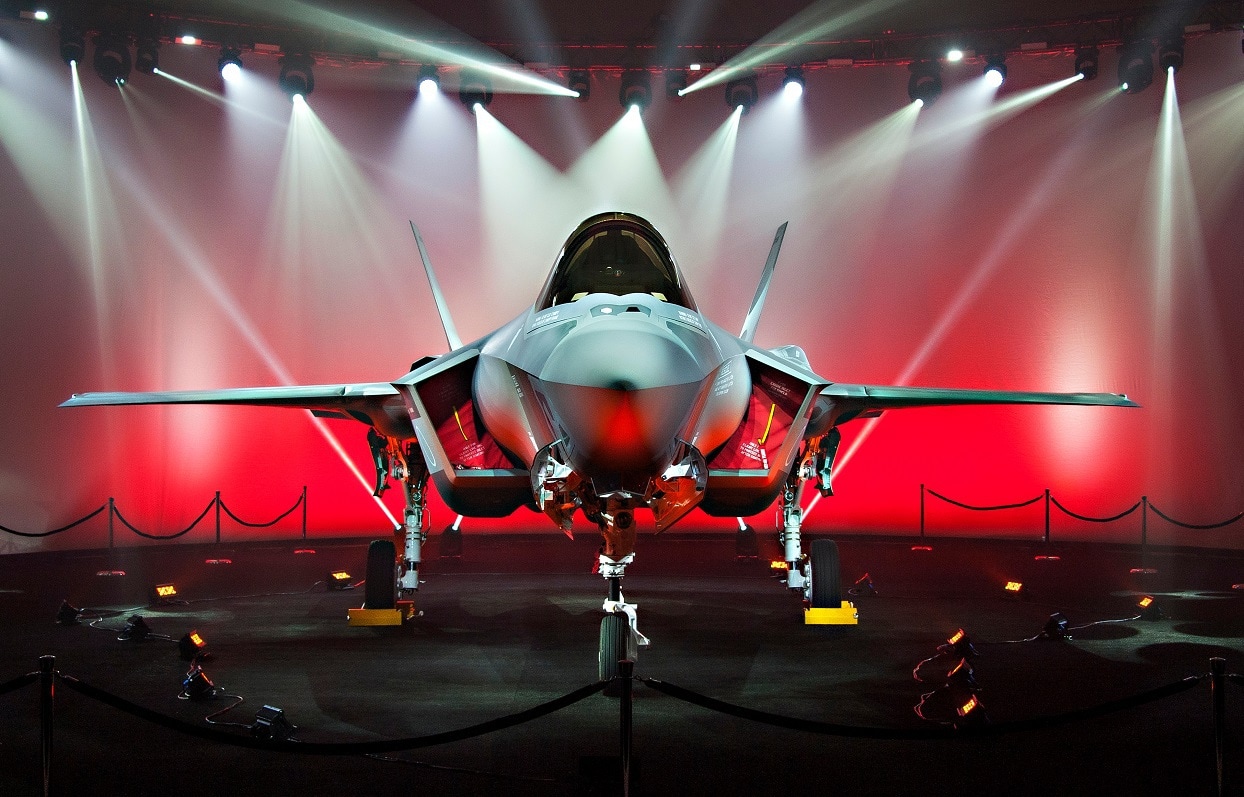Lockheed Martin Skunk Works is doubling down on aerial drone warfare. You may have heard of the Loyal Wingman concept in which U.S. Air Force fighters serve as the “head coach” for a drone that can surge out front in a hunter-killer or reconnaissance mode. Now, Skunk Works has plans to make this idea even better. This improvement is a scenario called “Distributed Team.” The new concept envisions even more diverse and autonomous unmanned systems flying with warplanes such as the F-35. Let’s take a deeper look at what that means for the Air Force.
What We Know: The Next Big Idea in Aerospace
Distributed Team was unveiled at a news conference on July 11. Attendees of the virtual meeting saw artist renderings of the new “big idea” in aviation – at least four drones in the mix running the gamut from less advanced “attritable” to more complex “exquisite” unmanned craft. That likely means hunter-killers in the front of the formation that if shot down do not end the mission, and those drones that are more advanced that hang back to protect the head coach and keep the F-35 pilot safe.
More Aircraft than Just One Loyal Wingman
Lockheed Martin says on its corporate website that Distributed Team “increases piloted platform survivability; extends the reach of networked sensors; and informs decision-making to enable more effective tactical execution.” So, we still have the autonomous drones being tied to the head coach but now the relationship and types of drones involved are more robust and capable.
Unlimited Imagination
Leadership at Skunk Works doesn’t think just one Loyal Wingman drone will be enough to address the complexities of next generation aerial combat. There is strength in numbers, according to Skunk Works General Manager John Clark in his presentation to attendees.
“As we went through and did our U.S. operations analysis, [we] didn’t see the loyal wingman constructs really making the substantive mission impact against the peer or near-peer adversaries the way that you would have expected off the cuff,” Clark said. “Instead, you started to have a distributed team and that distributed team is operating with each [one] with their own unique roles.”
How to Better Address the Enemy
Skunk Works has been working on Distributed Team since 2018. The idea was to match drones to their best abilities, whether that was stealth and penetrating air defenses or providing target acquisition data and damage assessment to intelligence, surveillance, and reconnaissance. Skunk Works wanted designers to have freedom of thought when it came to re-imagining what aerial combat will look like in the coming years. One of the early ideas was to take new airplanes such as the plan for the Next-Generation Air Dominance fighter and the B-21 Raider to be teamed up with a Space Force constellation of satellites.
How Much Money Can Be Saved?
Then the group of designers and engineers looked to focus on the role of unmanned vehicles that could be attritable or expendable and not create a show-stopping moment to the operation if they were shot down. The Distributed Team group also wanted to look at the cost level appreciating or lowering depending on logistics of the expendable drones – or what their total life cycle costs to produce. The main goal for the Distributed Team is for reusable drones, but there are also plans in case these are destroyed by the enemy, so this creates a conundrum for the program over cost projection when drones are lost in battle.
Important Contribution to International Security
Despite some unanswered cost questions, Distributed Team is a noteworthy development. It seems Skunk Works is constantly improving on concepts that have already been introduced and the design staff creates a new idea that builds on prior iterations. This type of imagination will be paramount in the next ten years as Russia and China advance with their own next generation defense platforms. It appears that Skunk Works will be busy coming up with the next great thing.
Now serving as 1945’s Defense and National Security Editor, Brent M. Eastwood, PhD, is the author of Humans, Machines, and Data: Future Trends in Warfare. He is an Emerging Threats expert and former U.S. Army Infantry officer. You can follow him on Twitter @BMEastwood.

